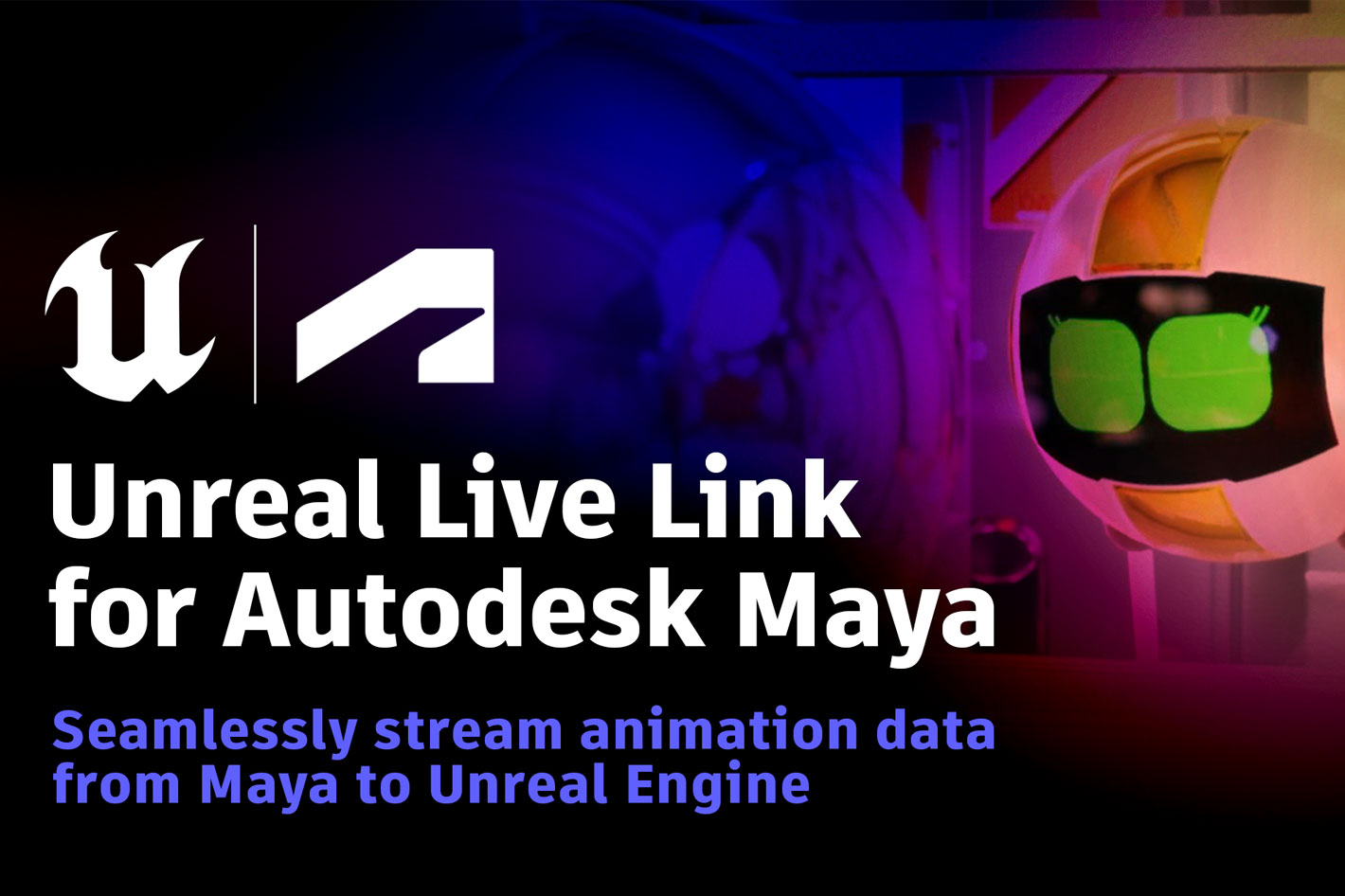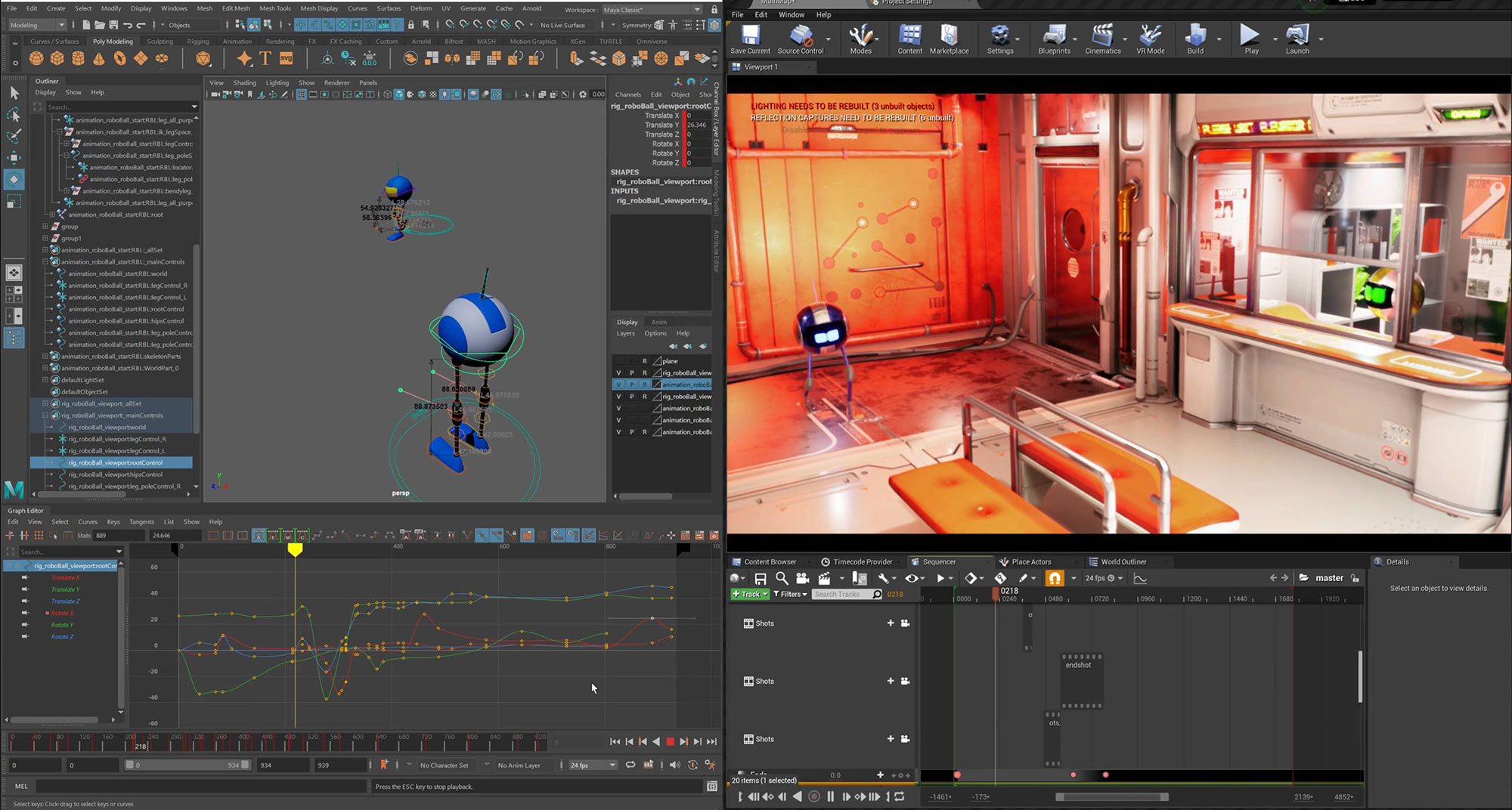
Virtual Production, previsualization workflows and game development get a boost with the new Unreal Live Link for Autodesk Maya plugin, announced this month. Developed in collaboration with Epic Games, the new Live Link plugin supports seamless exchange of animation data between Maya and Unreal Engine to expedite anything from Virtual Production to game development workflows.
Autodesk says that the Live Link plugin allows artists to easily create and edit character assets in Maya, while simultaneously seeing live previews in Unreal. Effortless data transfer between Maya and Unreal speeds production workflows by enabling artists to produce more iterations and view changes in real-time to make more informed decisions, ultimately resulting in expedited project delivery.
“The pandemic helped evolve virtual production from an emerging technique to a necessary workflow for reducing on-site staff and accelerating post pipelines,” said Maurice Patel, Senior Director, M&E Business Strategy, Autodesk. “Powerful tools like Unreal Live Link for Maya that support the highest quality imagery, coupled with the rise of more affordable performance capture technology, are making virtual production accessible to a wider range of production budgets, helping teams of all sizes meet increasing demands for content.”


“We are in the midst of a really exciting era for entertainment production where film, animation and games workflows are blending to empower users of all levels. Maya and Unreal Engine are both best in class, industry-leading tools, and being able to use them together unlocks new possibilities,” said Jordan Thistlewood, Product Management Director, Virtual Production for Epic Games. “Artists have never had so much feedback at their fingertips, enabling them to put so much of their time into their creativity. It is exciting to imagine the range of great stories and experiences we will see made with the new Maya and Unreal Engine Live Link plugins.”
Originally developed by Epic Games, Live Link is comprised of separate Maya and Unreal plugins that work in tandem to allow artists to stream data seamlessly between the two applications. In support of open standards and building more robust workflows between Unreal and Autodesk’s portfolio of creative tools, Autodesk partnered with Epic Games to advance the Maya plugin and extend the tool’s functionality to better meet the needs of artists and studios.
The updated Live Link plugin features a simplified installation experience to link Maya and Unreal assets, allowing artists to get up-and-running in a matter of minutes. Once set up, artists can animate, keyframe, and modify keyframes for character assets in Maya, while simultaneously viewing character updates in-context and in real time in Unreal. Key features and tool highlights include:
- A streamlined user experience that expedites workflows by making it easier to connect Maya and Unreal and make live changes to assets.
- Joint hierarchy transforms can be connected allowing for character to character streaming.
- Blend shapes are supported, enabling artists to make changes to characters – like facial expressions and lip syncs – and view in-context changes in Unreal.
- Camera attributes including transforms, angle of view, focal length, film gate, camera aperture, film aspect ratio, depth of field, focus distance, and fStop are supported.
- Lighting adjustments including color, intensity, cone angle and penumbra angle work are supported.
- Scene timecode is streamed to Unreal, allowing play head synchronization between Maya and Unreal.
- Back version support enables the Live Link plugin to be used with Maya 2018 through 2022, for users working with older versions of Maya.
The Unreal Live Link for Maya plugin is now available as a free download on the Autodesk App Store. To see the plugin in action, watch Epic’s recent webinar (video above), and read the Unreal Live Link for Maya AKN article for more details on setting up the plugin, getting started, and exporting to Unreal. Visit the Maya Learning Channel for additional resources and tutorials.


